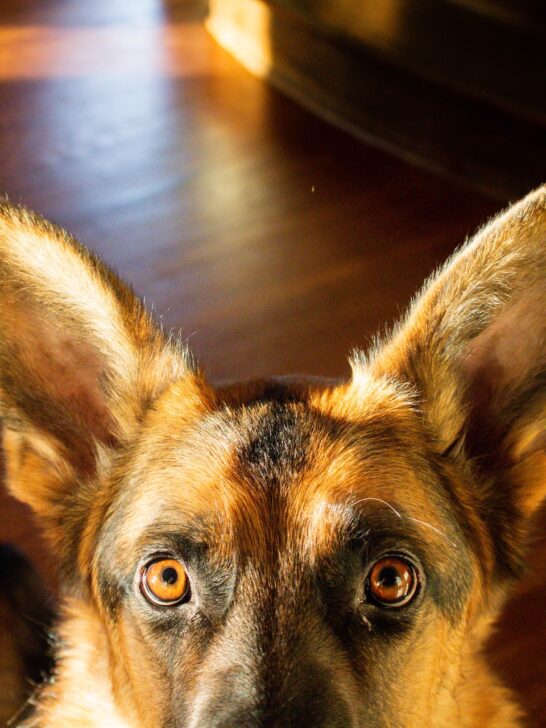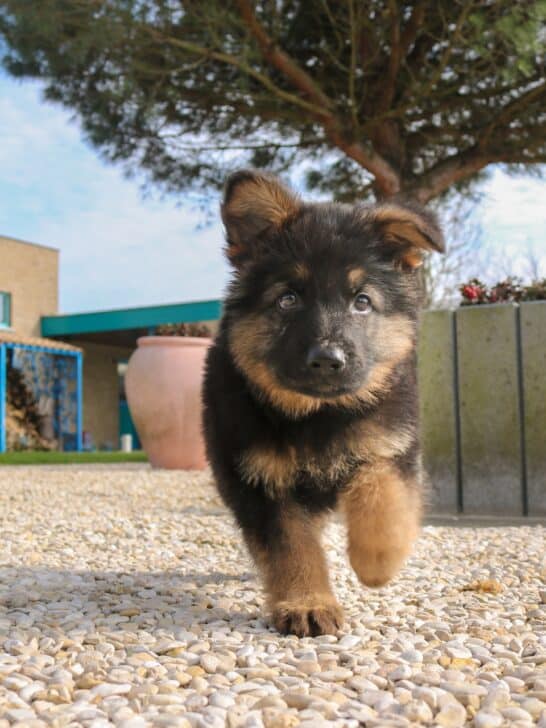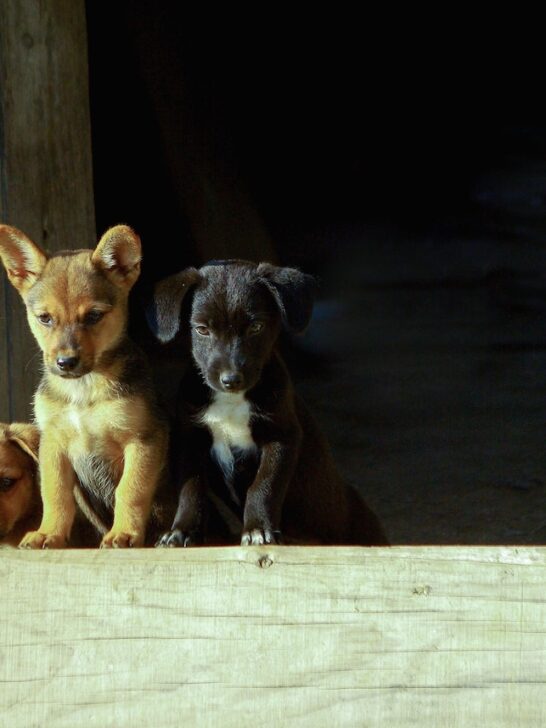When Do Puppies Stop Drinking Milk From Their Mother?
Puppies start their life by feeding on their mom’s milk supply. As they grow, they slowly transition to a diet of solid food for the rest of their life.
Getting this timing right is crucial for a well-developed, healthy, and happy pup. Here’s everything you need to know about puppies, milk, and their journey to eating solid food as grown dogs.
What is Weaning?
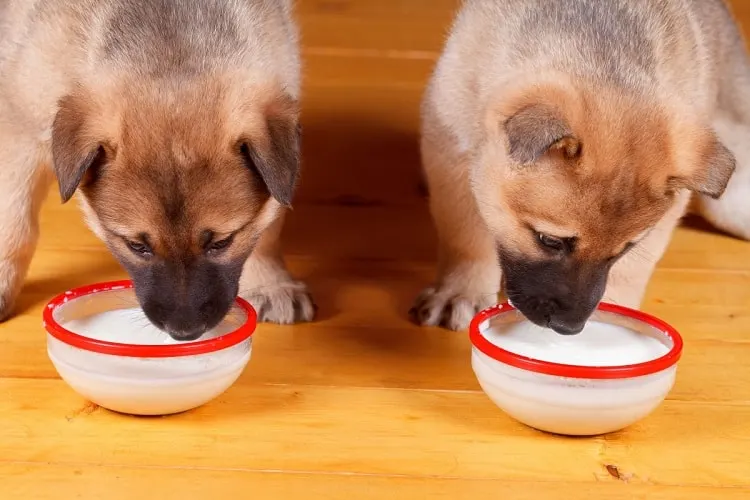
Weaning is the clinical term for slowly removing mom’s milk as a food source, and replacing it with solid food. It’s the period during which puppies stop nursing.
Weaning at the right time isn’t just about the food source. If they are to develop properly, puppies need a lot of the added nutrients from milk – the protective antibodies from mom and the colostrum that helps power up their development.
They learn a lot of ‘soft’ social skills while nursing, too, so it’s important that the timing is right to produce a healthy, happy youngster. Weaning correctly reduces dependency on the mother, naturally and without trauma.
Puppies are typically fully weaned when you collect them from the breeder, so you won’t need to worry too much unless you have a litter yourself or are caring for an abandoned or orphaned puppy. Regardless, it’s good to understand the process as part of your dog’s development cycle.
When to Start Weaning a Puppy?
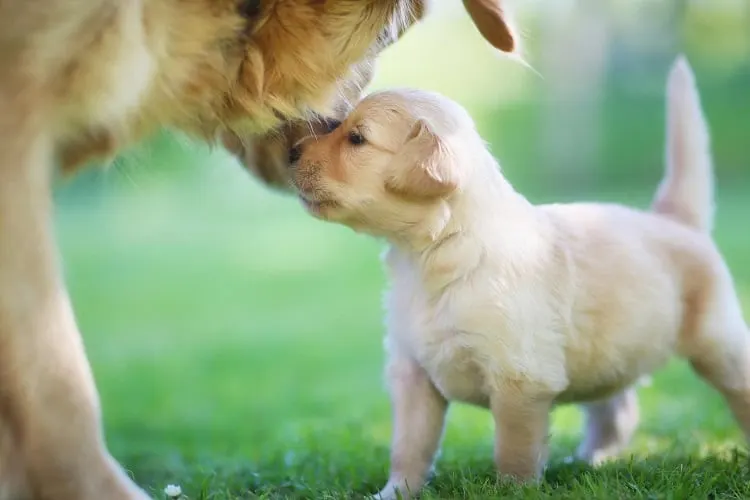
The mother dog commonly starts the weaning process at the right time. It begins around weeks two to four of their life, and will slowly carry on until around seven to eight weeks.
At this point, the mom typically stops nursing and puppies should have a full set of teeth to eat proper solid food.
A puppy who is being bottle-fed or supplemented can wean on the same timeline for the best results. Weaning is not an instant process; access to milk should never be withdrawn entirely until the puppy eats solid food well.
It should go without saying that the ‘milk’ in question is either the mother’s produced milk or a puppy-safe lactation equivalent. Puppies should never be given cow’s milk; many dogs are at least mildly lactose-intolerant.
Water should be introduced to puppies around the third week of their lives. First, boil it and let it cool, as with human babies. Most young puppies drink about half a cup of water in two hours.
Mom’s typical deep-water dish is a drowning hazard for young dogs whose eyes are not yet open, or have only just started to open.
Keep dishes shallow and monitor the litter. Mom can have a deeper bowl away from the pups if needed. Place puppy bowls outside the whelping/sleeping area, and consider taking the bowls away at night.
Why is Weaning Necessary
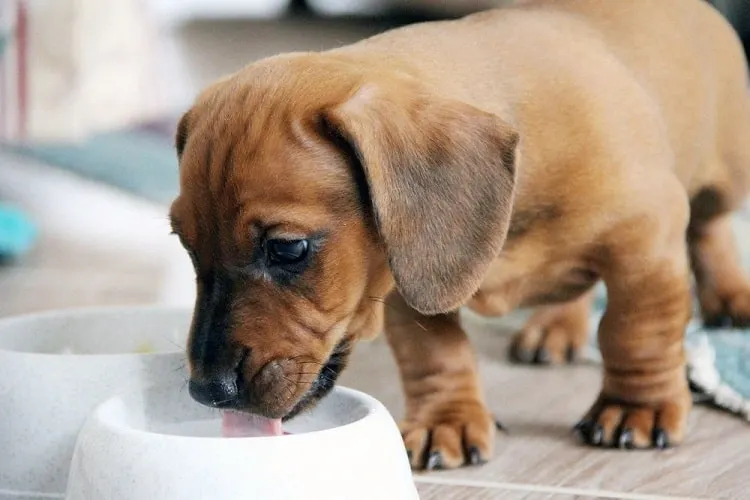
The weaning process helps puppies learn to be curious and independent, away from their mother. They can learn the tricky aspects of eating while there’s still a safe and steady supply of milk to supplement.
Puppies also learn to function as their own self instead of being one of the litter with mom guiding everything.
Bear in mind that these timelines are approximations, and some puppies are early or late bloomers. There’s nothing wrong with extending weaning a little more if the puppy needs it.
They may need additional help if the puppy is still not eating well or if the mom is tired of them.
It’s important to ensure the pups meet their nutritional and developmental goals. Many breeders weigh puppies to track their development and ensure they are growing as they should.
If puppies aren’t taking to soaked kibble, scrambled eggs (cooked, without oil) can be offered as a limited replacement to encourage them to explore soft food. But, a high-quality, early-stage puppy kibble is always best.
The Weaning Process
Typically, the mom initiates weaning by not letting the puppies suckle until they finish, and she may get up and walk away when she feels it’s time.
They will gently discourage persistent nurses by nuzzling them away or by making a soft, gentle growl.
The puppy will likely still be a little hungry, so they may go look for other food to fill them up. In the wild, this will be whatever mother is eating herself.
For our companion animals, it’s hopefully high-quality, suitable food that will continue to boost their development.
Weaning a Puppy From Their Mother
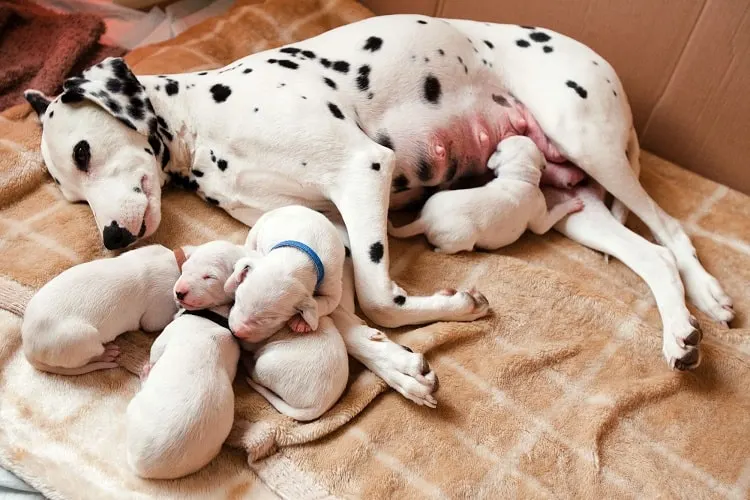
Typically, you don’t need to interfere with this process if the litter has a mother. However, there are times when nature may need a hand. While this can be done to prepare a pup for their new home fully, it shouldn’t be forced too early.
Good breeders will ensure the pup leaves for their new home at a natural part of their growth cycle, which should be at least eight weeks old.
If mom does need a hand with persistently nursing pups, you can create a puppy-safe place that’s draft-free, and cozy. At about five weeks, feeds from mom should only be at intervals of four hours or more.
Make sure there’s some high-quality, puppy-friendly food at these times. It should be moistened for added palatability (and little mouths).
They’re still likely to smear it all over rather than get it in their tummies to start, but they will get there.
A little fresh water should also be on-hand. Use shallow dishes so there’s no risk of aspiration or drowning. If you’re assisting this alone time, wipe the puppy down before returning them to mom.
Weaning a Bottle-Fed Puppy
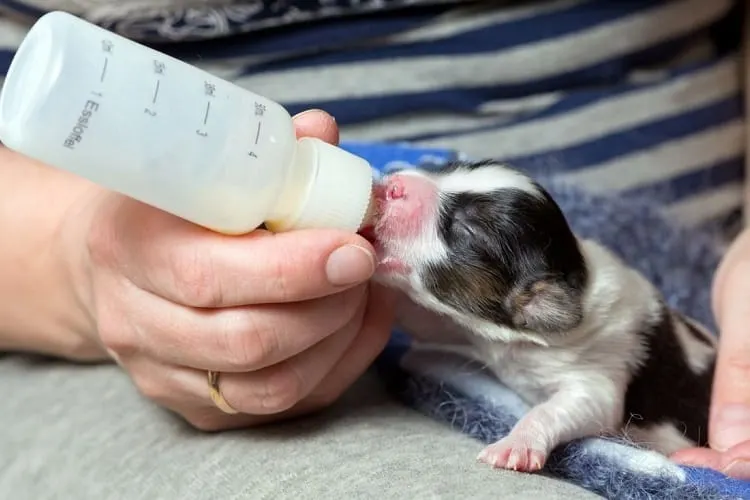
Things will obviously look slightly different if you’re caring for a rejected or orphaned pup. You’ve been feeding the little one with a suitable puppy milk replacement, probably from a dropper and then a syringe and bottle.
To start weaning, place some milk in a shallow dish and let them try lapping it. Continue to offer some bottle feeds in the meanwhile for a smoother transition.
By week four or five, withdraw bottle feedings and start offering some soaked kibble alongside the milk, gradually shifting to food only.
Late in the fifth week, start offering dry food when the puppy shows signs of hunger, as they may be curious and try it. Softened food should remain on the menu until about seven to eight weeks.
After eight weeks, the puppy can be offered dry food alone, providing all goes well.
Conclusion
Weaning is a critical life stage for puppies, starting their journey to happy, healthy, and independent young dogs. A new puppy owner most likely won’t need to take part in the weaning process, as puppies should be collected fully weaned.
However, it’s essential to understand how to care for a pup who’s lagging a little developmentally, or if you find a puppy in an emergency and need to help it survive.
Likewise, it’s always good to understand your puppy’s transition from newborn to the alert little friend you take home.
FAQ:
1. What is weaning for puppies?
Answer: Weaning is the gradual process of removing puppies from their mom’s milk and introducing solid food to their diet.
2. When should puppies start the weaning process?
Answer: The weaning process typically starts around weeks two to four of their life and continues until around seven to eight weeks when the mom stops nursing and the puppies have a full set of teeth to eat proper solid food.
3. Why is weaning necessary for puppies?
Answer: Weaning helps puppies learn to be curious and independent, away from their mother. Puppies also learn to function as their own self instead of being one of the litter with mom guiding everything.
4. How can you help wean a puppy from their mother?
Answer: If the mother needs help with persistently nursing puppies, you can create a puppy-safe place that’s draft-free and cozy. At about five weeks, feeds from mom should only be at intervals of four hours or more. Make sure there’s some high-quality, puppy-friendly food at these times.
5. What if you’re caring for a bottle-fed puppy?
Answer: To start weaning, place some milk in a shallow dish and let them try lapping it. Continue to offer some bottle feeds in the meanwhile for a smoother transition. By week four or five, withdraw bottle feedings and start offering some soaked kibble alongside the milk, gradually shifting to food only.


























